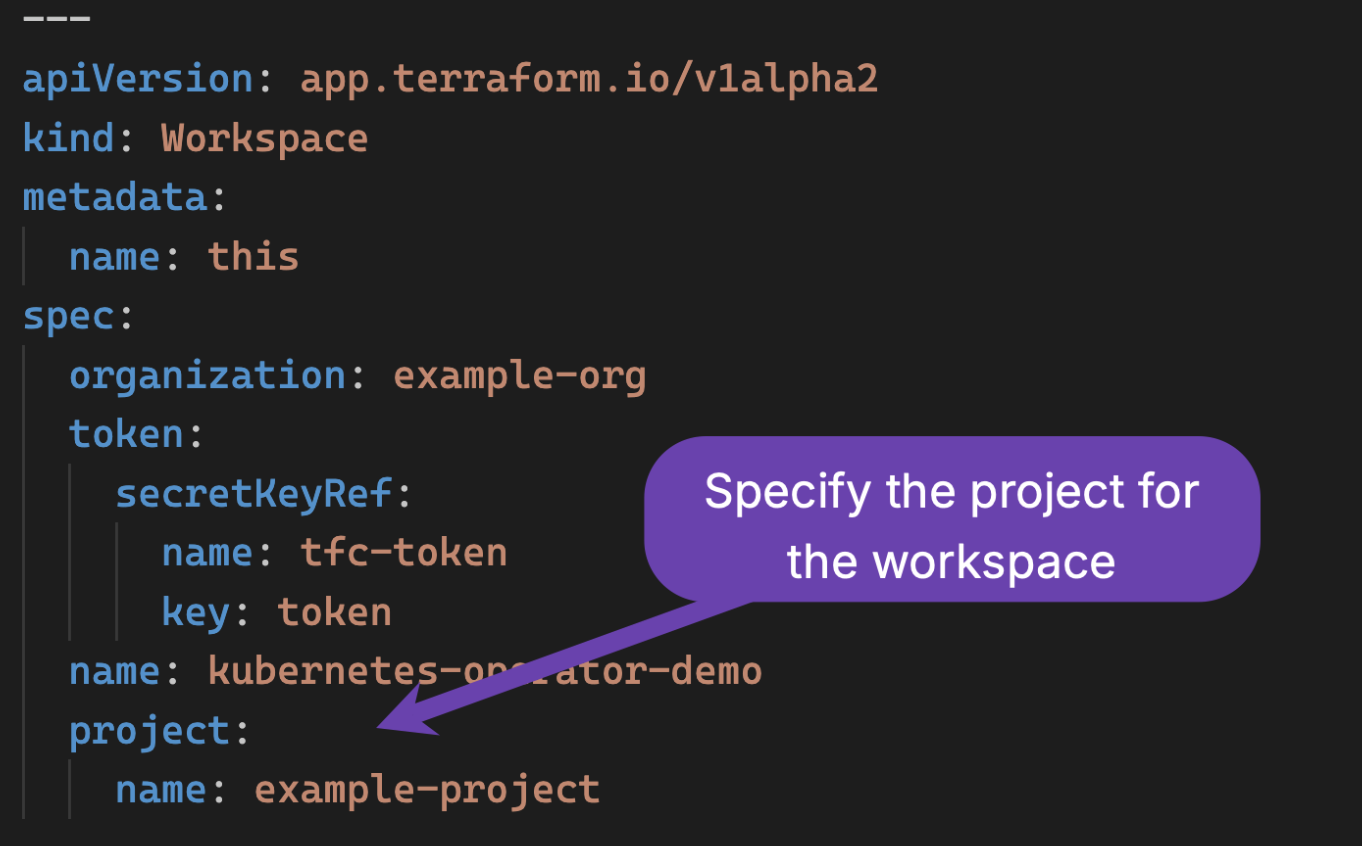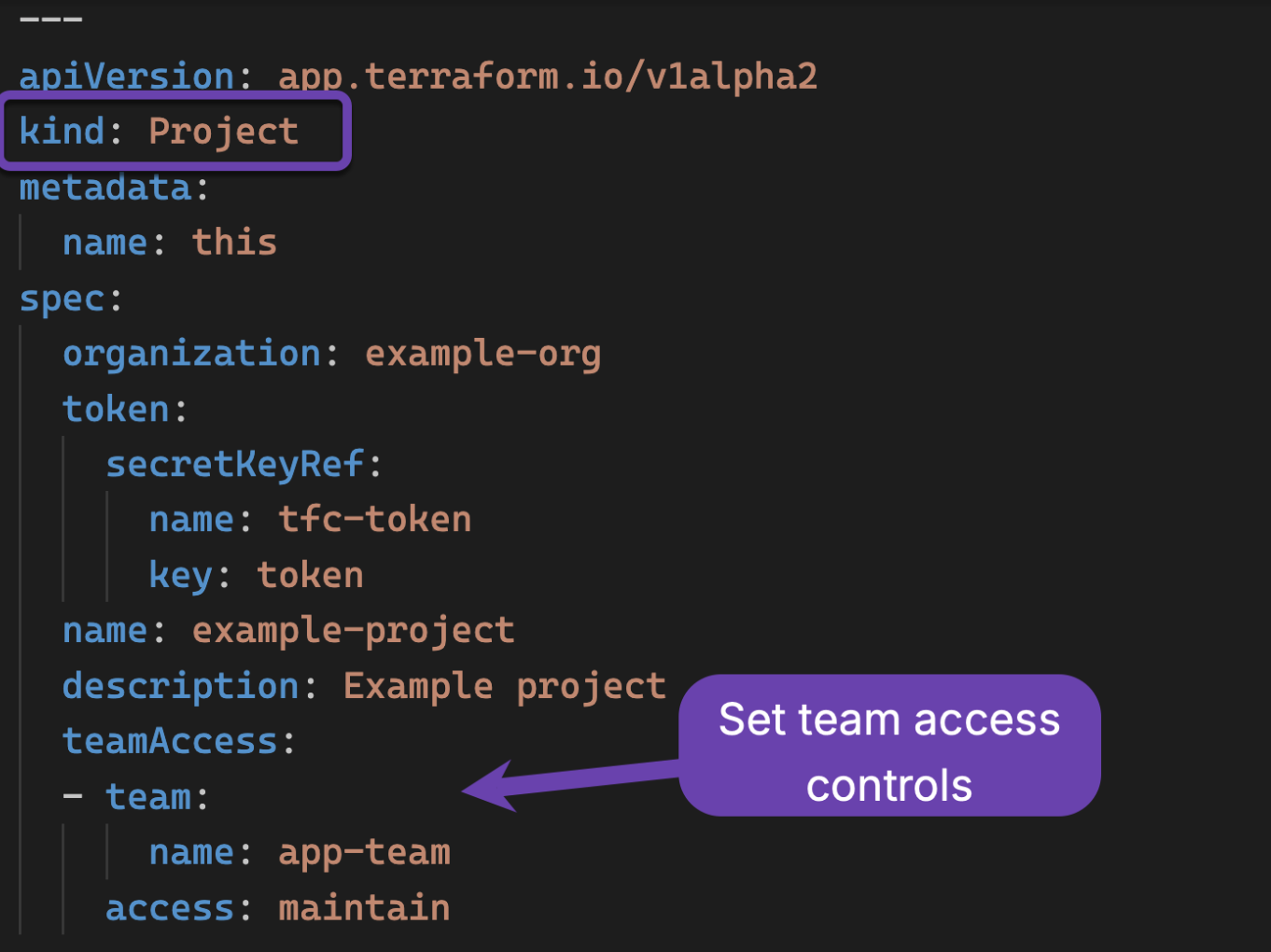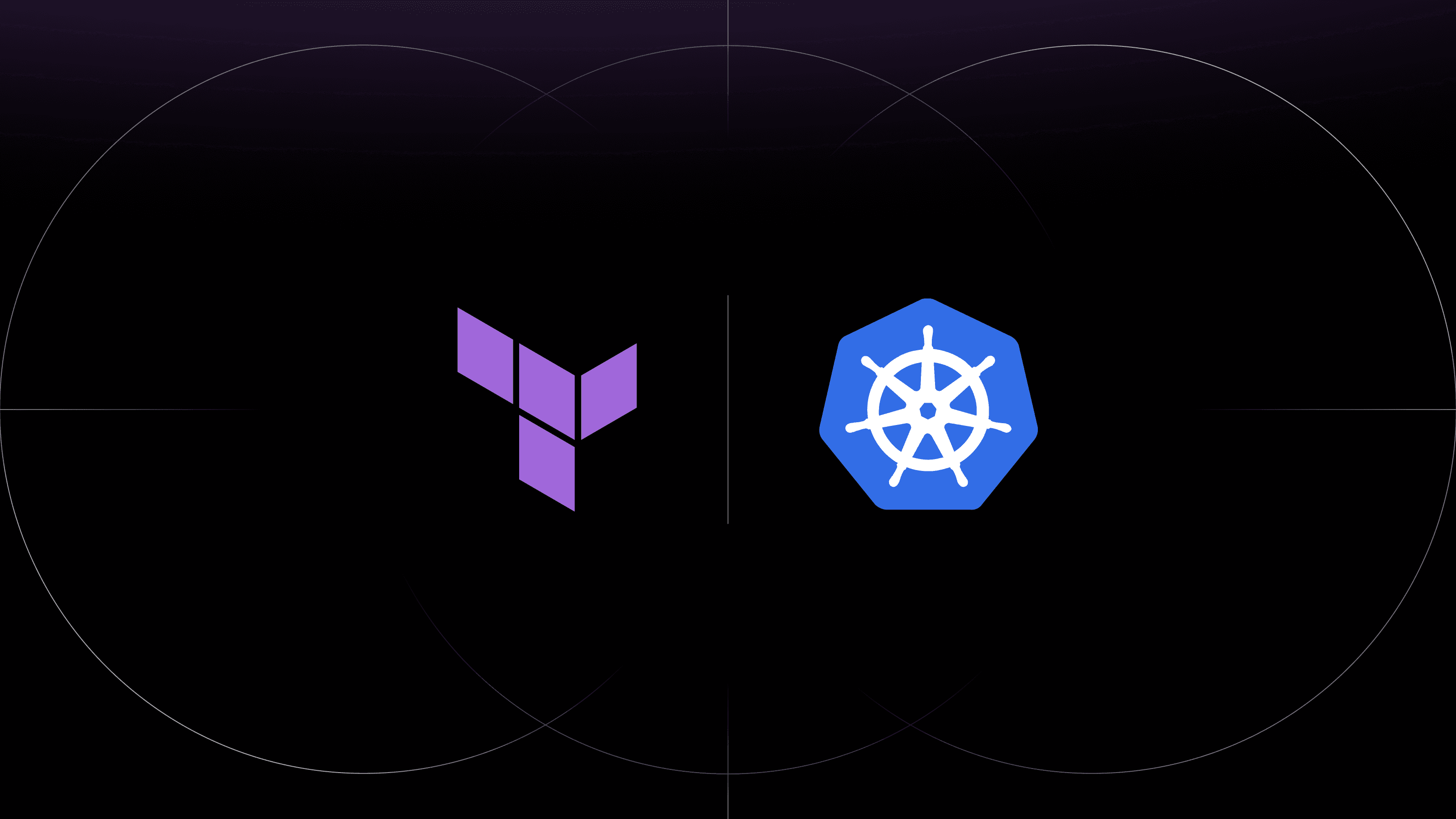In November 2023, we announced the general availability of the Terraform Cloud Operator for Kubernetes. The Terraform Cloud Operator streamlines infrastructure management, allowing platform teams to offer a Kubernetes-native experience for their users while standardizing Terraform workflows. It simplifies the management of Terraform Cloud workspaces and agent pools, ensuring efficiency and consistency across operations. Today we are excited to announce the general availability of project support in the latest version of the Terraform Cloud Operator, version 2.2.
»Introducing project support
Previously, workspace creation using the operator was limited to the default project in Terraform Cloud. Users needed elevated user permissions, which led to security risks from overly broad access and also hindered self-managed workspaces due to frequent central team dependency. Now with project support, users can specify the project where a workspace will be created. This enhances self-service by allowing users to independently create and manage workspaces, and execute runs within the context of their assigned project.

The project name can now be set in the Workspace resource (example code).
Also, project administrators can use the new Project custom resource to create and manage projects and team access in the organization:

The new Project custom resource manages Terraform Cloud projects and team access (example code).
»Key benefits
The general availability of project support for Terraform Cloud Operator brings two main benefits:
- Improved efficiency: Projects streamline platform teams’ ability to group related workspaces based on their organization’s resource usage and ownership patterns (e.g. by teams, business units, or services). These workspace groupings reduce complexity when managing and organizing Terraform configurations..
- Reduced risk: Instead of managing permissions for each workspace individually, you can group related workspaces into projects, then grant teams access to the project. Those permissions will then apply to all workspaces under that project. This helps teams manage the workspaces they are responsible for while still having their permissions confined to a project, rather than the whole organization, making it easier for organization owners to follow the principle of least privilege.
»Learn more and get started
Take a deeper dive into the Terraform Cloud Operator and securely managing Kubernetes resources by signing up for the Multi-cloud Kubernetes with HashiCorp Terraform webinar.
Learn more about project support for the Terraform Cloud Operator by reading the documentation. If you are completely new to Terraform, sign up for Terraform Cloud and get started using the Free offering today.









